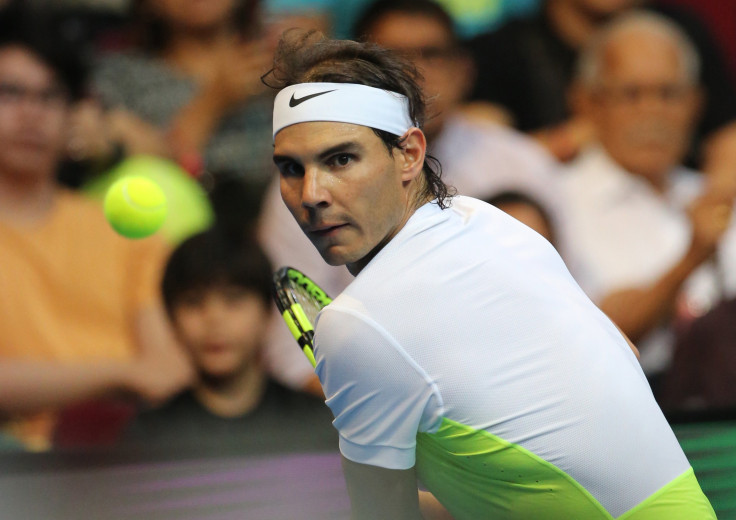Rafael Nadal News: Can Rafa Win Grand Slam Titles Again In 2016?

It’s fair to say that 2015 will not go down among Rafael Nadal’s best years in tennis. For the first time since he broke through as a spectacularly precocious teenager to win the first of nine French Open titles in 2005, the Spaniard failed to land a Grand Slam crown. And he didn’t even come close to doing so, falling before the semifinals in each of the four Majors, and, most painfully off all, relinquishing his domination at Roland Garros with a straight-sets defeat to Novak Djokovic in the quarterfinals. At one point during the year, the former world No. 1’s ranking dropped as low as No. 10.
Given he is approaching his 30th birthday, has a gruelingly intense style that has already taken its toll on his body with a long-term knee problem, it would be easy to write Nadal off from ever returning to his indomitable best. While Roger Federer continues to challenge for Grand Slam titles into his 35th year, there is a widespread assumption that such longevity, enabled by the Swiss’ elegant, airy style, could not be replicated by his greatest rival. Asked about that theory last week, Nadal stressed that now would be no time to change his playing approach, but that he still had much to give.
“I'm not Federer, I'm Rafael Nadal,” he said while in Manilla for a leg of the International Premier Tennis League. “He has his style and I have my own style. I for sure try to improve many things during all my career and for sure I'm working hard to be a better player. And if I am a better player for sure I will have the chance to play a bit longer.”
Rather than desperate, blind optimism, there is reason to believe that Nadal has at least one strong chapter yet in his career, and can make a strong return to form in 2016. After the low of a third-round defeat to Fabio Fognini at the U.S. Open, when he relinquished a two-set lead, Nadal finally began to find some form.
First reaching the final in Beijing and Basel, he then trounced both Andy Murray and Stan Wawrinka in the season-ending ATP World Tour Finals before bowing out to Novak Djokovic in the semifinals. Nadal, though, was cautious when asked whether he could get back to the top in the coming year.
“I don't know if I'm going to be back to winning Grand Slams but I'm working hard to create opportunities to compete for the best tournaments and I'm working so hard to try to make that happen,” he said. “I think it's obvious that I did not have the best season possible, but I am number five in the world so actually it's not a disaster.”
Although much of the focus during Nadal’s lowest points was on his physical condition, unsurprisingly given that he endured an injury-ravaged climax to 2014, the bigger concern became his mental state. Nadal admitted to a lack of confidence on court, and it was plain to see that the once iron will that characterized his play was startlingly absent. Getting that back, as well as staying healthy, will be crucial in the months ahead.
Nadal’s season will start at an exhibition event in Abu Dhabi, beginning on New Year’s Eve, before traveling to Doha on Jan. 4 for his first ATP Tour event. From there, the year’s first Grand Slam will come around swiftly, with the Australian Open getting underway on Jan. 18. Nadal’s record in Melbourne has been a fairly consistent one. While he was knocked out in the quarterfinals last year, he has reached three finals, winning once, in 2009, and in 2012 losing the longest Grand Slam final in history to Djokovic.
And it is Djokovic who will provide the greatest barrier to Nadal getting back to the Grand Slam winners’ circle in 2016. The Serb won three Grand Slams last year and beat Nadal in all four of their meetings. But, while winning in Melbourne will be an uphill task, the prize of landing a 10th French Open crown in June can certainly not be ruled out.
© Copyright IBTimes 2024. All rights reserved.











